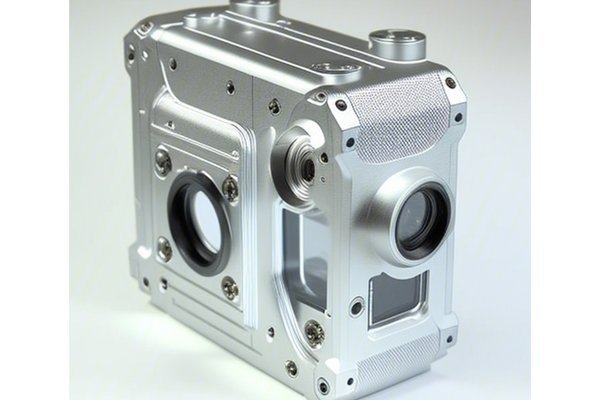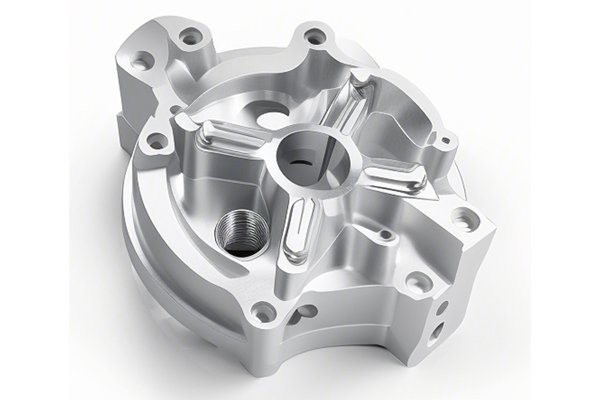Did you know that the global CNC machining market is projected to reach approximately $117.2 billion by 2026, growing at a CAGR (Compound Annual Growth Rate) of 6.8%? This growth reflects the increasing demand for precision engineering across a multitude of industries, from aerospace to automotive and medical to electronics. The reason for this surge is clear: high precision CNC machining offers unparalleled accuracy and efficiency, which allows businesses to create complex parts and components with minimal waste.
In today’s fast-paced manufacturing environment, the demand for precision and quality is higher than ever. High precision CNC machining stands out as a preferred method among engineers and manufacturers looking to produce intricate parts with exact specifications. This blog will explore the key benefits of high precision CNC machining, dissect the various applications, and provide solutions on how to integrate this technology into your projects effectively.
What is High Precision CNC Machining?
Before diving into its benefits, let’s first clarify what high precision CNC machining is. CNC (Computer Numerical Control) machining utilizes computer programs to control machine tools, ensuring that each part is manufactured with extreme accuracy. High precision refers to the machine’s ability to achieve tolerances of ±0.01 mm or better, allowing for exceptionally detailed and complex designs that traditional machining methods cannot provide.
When engaging with CNC machining, the process involves various steps, including design, programming, and milling or turning. Here, we will explore how high precision can transform each of these stages into a seamless operation, minimizing human error while maximizing productivity.
The Core Benefits of High Precision CNC Machining
High precision CNC machining substantially increases the accuracy of the manufactured parts. Unlike traditional machining methods that may rely heavily on manual adjustments and human operators, CNC machines follow programmed instructions to make precise movements. Consequently, once a CNC program is written and verified for accuracy, it ensures that every part produced is identical to the specifications, resulting in minimal variations.
Solution: To achieve maximum consistency, invest in sophisticated CNC machines equipped with advanced technologies like linear scales and closed-loop systems. These technologies minimize error margins and validate measurements continuously during the machining process.
High precision CNC machining significantly reduces material waste. Traditional machining processes may involve significant trial and error, leading to excess scrap material. In contrast, CNC machines fabricate parts according to exact dimensions, using only the necessary amount of material.
By utilizing materials efficiently, companies can save significantly on material costs while minimizing disposal fees for scrap. Additionally, the reduction in human error means lower labor costs due to fewer mistakes that need to be corrected.
Solution: Choose a reliable supplier who can provide you with materials that have undergone rigorous quality checks. This will work hand-in-hand with CNC machining efficiency to ensure that nothing goes to waste.
In today’s competitive market, simple designs no longer suffice. High precision CNC machining allows manufacturers to churn out complex geometries that were once challenging to achieve. Whether it’s intricate details in aerospace components or medical devices, CNC machines can automate complex designs that adhere to tight tolerances.
Furthermore, multi-axis machining capabilities allow for the production of shapes that wouldn’t be possible with traditional machines. Some CNC machines can operate on 5-axis or even 6-axis configurations, providing unparalleled access to the workpiece from different angles.
Solution: Engage in thorough design planning and leverage advanced CAD software when creating models to ensure that the intricacies of the designs are preserved and compatible with CNC machining capabilities.
Manufacturing speed is crucial in today’s fast-moving sectors, and high precision CNC machining is known for significantly shortening production times. Once programmed for production, CNC machines can operate continuously with minimal supervision, enabling round-the-clock manufacturing.
This efficiency ensures that you can meet high-volume production demands without sacrificing quality. The rapid turnaround associated with CNC manufacturing allows businesses to respond quickly to market changes.
Solution: Schedule regular maintenance for your CNC machines to minimize downtime. Additionally, staff training on efficient operation will enhance productivity and further shorten lead times.
Another noteworthy advantage of high precision CNC machining is its ability to quickly adapt to changing designs or specifications. If you require custom parts or unique features, CNC machining is highly capable of producing pieces tailored to your needs.
This flexibility is invaluable, particularly in industries, such as healthcare or aerospace, where design changes can occur rapidly. The ability to customize without extensive retooling or downtime is one of CNC machining’s standout benefits.
Solution: Ensure that your CNC machining service provider is equipped to handle short runs and bespoke projects. Working with experienced partners can facilitate design changes without drastic impacts on your timelines or budgets.

Lastly, high precision CNC machining improves workplace safety significantly. The automation of machinery removes many of the risks associated with manual operations. CNC machines can process materials more safely than human operators, reducing the chance of accidents or injuries.
Additionally, sophisticated CNC machines have built-in safety protocols, such as emergency stop functions and protective barriers, that are not present in many manual operations. Prioritizing safety can lead to a healthier work environment and reduce insurance costs.
Solution: Invest in employee training focusing on machine operation and safety protocols to further enhance overall workplace safety and machine handling.
Integrating High Precision CNC Machining into Your Workflow
Now that we’ve highlighted the benefits of high precision CNC machining, how can businesses effectively integrate this technology into their operations?
Choosing the right CNC machine is crucial for maximizing the advantages of CNC machining. Factors to consider include:
Investing in a machine that is too small for your needs can lead to operational bottlenecks, while over-investing in unnecessary capabilities may hurt your bottom line.
A significant aspect of successful CNC machining lies in effective design workflows. Engage in using advanced software for drafting (CAD) and simulation (CAM). Developing a workflow that ensures designs can be prototyped, tested, and iterated rapidly will save time and reduce costs.
The choice of your CNC machining service provider is essential. Conduct thorough research and ask about their production capabilities, technology used, and delivery times. A collaborative partnership with a trusted provider can help you optimize designs and troubleshoot challenges as they arise.
Implement stringent quality assurance processes to verify the quality of machined parts continuously. Utilizing techniques such as First Article Inspection (FAI) and statistical process control can help identify deviations from specifications early in the production process.
Invest in training for your workforce. Having well-trained operators who understand both the technology and the broader production goals can boost efficiency. Ongoing education about the latest techniques, materials, and technologies ensures your team remains knowledgeable and competitive.
High precision CNC machining stands as an essential tool across various industries, offering increased accuracy, reduced waste, and the ability to produce complex designs at high speeds. The integration of CNC technology can dramatically enhance productivity and efficiency while providing the flexibility necessary for customization.
While the initial investment in CNC machines and related technology can be significant, the long-term benefits—including lower operational costs, faster turnaround times, and improved safety—far outweigh the drawbacks.
As industries continue to adapt to modern manufacturing demands, high precision CNC machining presents critical opportunities for growth and efficiency. One should consider how effectively leveraging this technology can transform production processes.
Ultimately, this blog serves as a guide for understanding and harnessing the power of high precision CNC machining. Whether you are looking to enhance your production capabilities or seeking competitive advantage in a complex market, it’s clear—investing in precision machining is a strategic choice that every forward-thinking business should consider.






